 
Wayne Side Loaders: Later Models
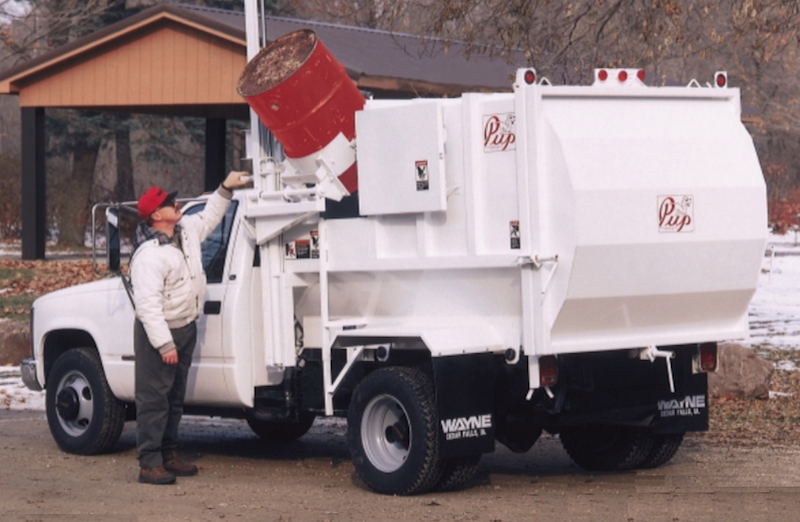
While Wayne had been doing extensive development on its rear loaders and automated Curbtender, they did not neglect their foundational product, the compact side loader. The original Mighty Pack scissor-blade side loader was eventually discontinued, leaving the 6-yard PUP as the lone offering for standard side loaders. The series used a body tapered inward sharply at the base, allowing it to mount lower on the chassis. This allowed for an improved center of gravity. The PUP name now referred to its diminutive size, not "Pick-Up", since they were now typically chassis-mounted.
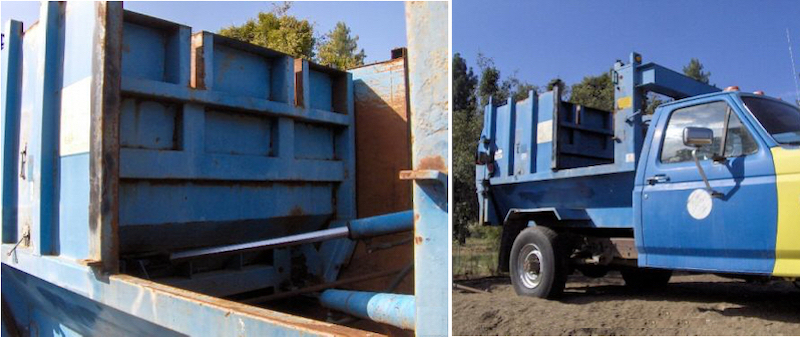
Cross-ram arrangement replaced the old scissor-linkage design
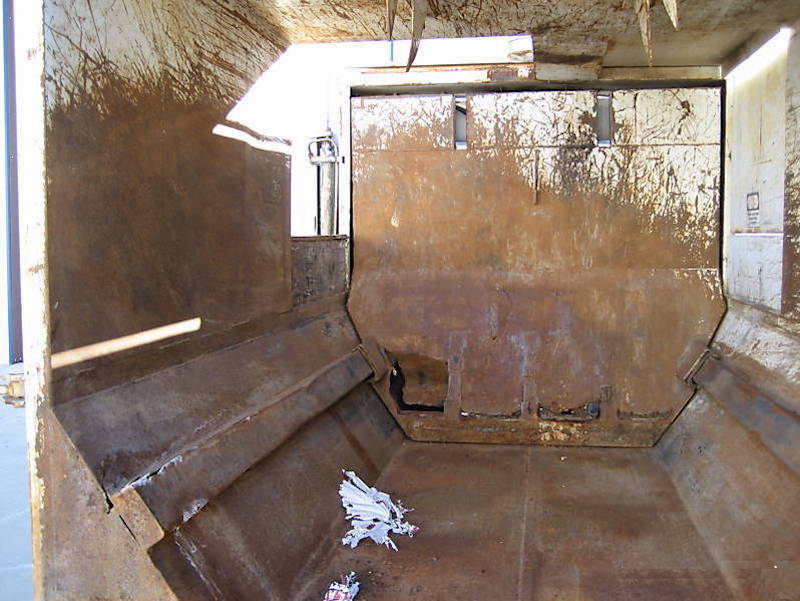
Body interior showing side angles with packer blade guide rails
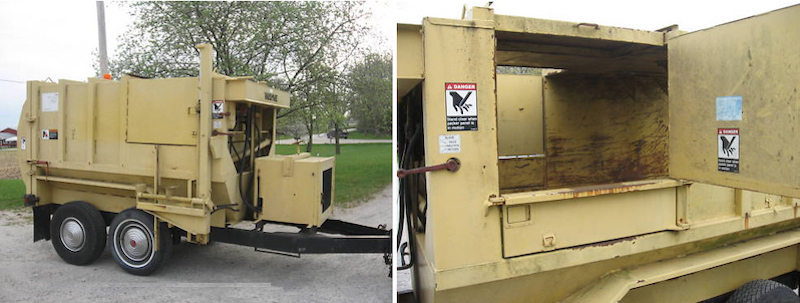
Wayne trailer-mounted side loader, powered by an air-cooled Kohler engine and hydraulic pump
SATELLITE SHUTTLE
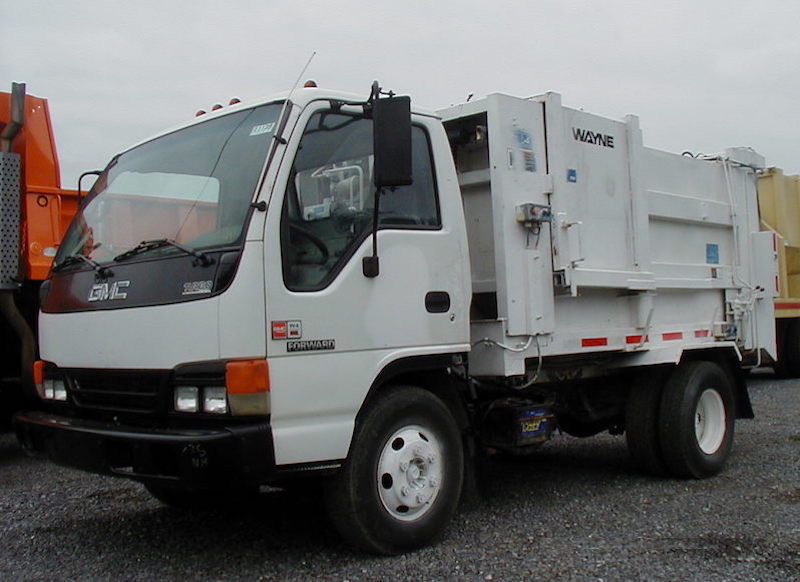
1997 Wayne Satellite Shuttle on GMC (Isuzu) tilt-cab
The larger Wayne side loader series became the Satellite Shuttle, a larger version of the original Satellite Pup which first appeared in the mid-1970s. As the name denotes, these were satellite loaders, whereby the body could be hydraulically raised to line up with a receiving rear loader. Vertical-sliding tailgate could be opened to any height, to "meter" the flow of refuse as it was transferred. Bodies ranged from 8 to 10 yards and still used the full-height packer blade. To extended the packer stroke without going to a telescopic ram, a Tri-Cylinder arrangement was used, with single-stage rams fastened together for a longer combined reach.
TOMCAT/AUTOCAT
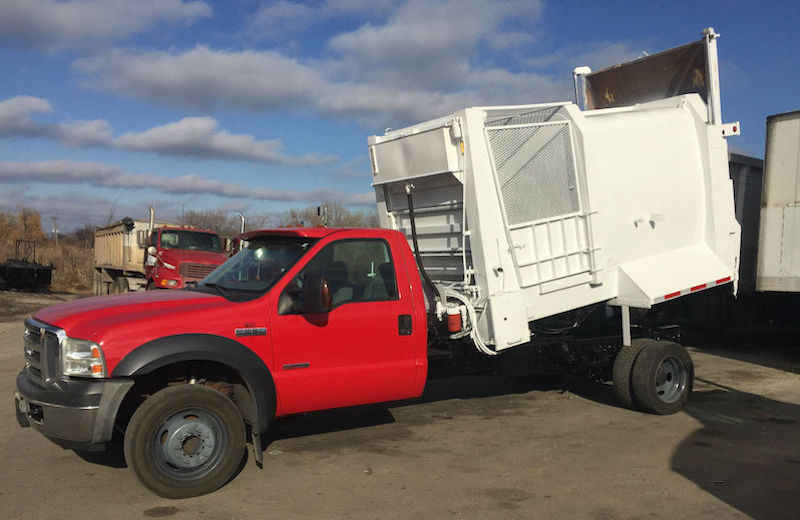
2007 Wayne Tomcat 8-yard on Ford F-550 Super Duty with 7.3L Powerstroke diesel engine
The shallow-blade partial packer side loader which had come to dominate the industry, found its way to Cedar Falls in the late 1990s in the form of the Tomcat. This replaced the Satellite Shuttle as Wayne's transfer-type side loader, and also sported a new lightweight curved-shell body. This was basically a scaled-down version of the Curbtender full-eject ASL, with a much shorter packer blade face. Like the larger ASL, track-guided follower sections on rollers enabled full ejection unloading, as well as allowing deep penetration into the body during the normal packing cycle.
Transfer of the entire load into the receiving vehicle was done by raising and sliding the rear of the body to mate with a rear loader hopper, raising the tailgate and the repeatedly cycling the blade until the load was ejected. Wayne's Curbtender full-pack system actually worked to great advantage here, since the load was ejected slowly, or metered, during the transfer process. Any refuse on top of the followers would be scraped off at the front of the body upon retraction, and pushed out in the next stroke. The Autocat is the fully automated version of the Tomcat.
The advantages of the Tomcat over its predecessor are numerous. All older-design side load packers with full-height blades suffered from a condition called fallback. Soon after the body was filled, the load would constantly fall back into the hopper area after each packing cycle, making loading difficult. On the shorter bodies typically made by Wayne, this condition was exacerbated. By contrast, the shallow-blade "inverted drawer" packer method offers better load retention, despite having a nominally small hopper. This method keeps most of the packed refuse inside the body, and can crush items as against the breaker bar (the reinforced lip above the passageway). Lighter weight bodies were possible, because of the reduced stresses of partial-packing the load. Although somewhat prone to clogging if loaded too fast, the hopper could be swept continuously, and even while moving between stops when equipped with a live-power PTO. Refuse could be loaded anytime during the packing cycle, regardless of blade position.
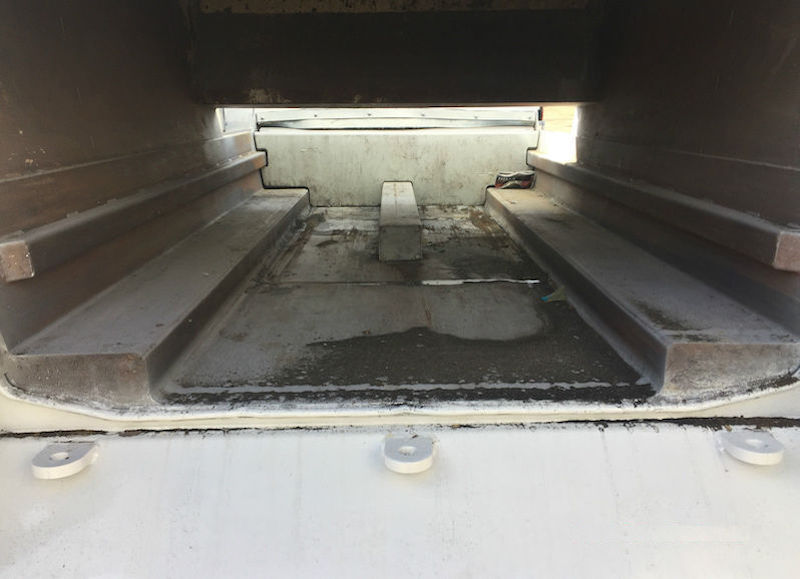
Interior of Tomcat showing packing/ejection panel and tracks
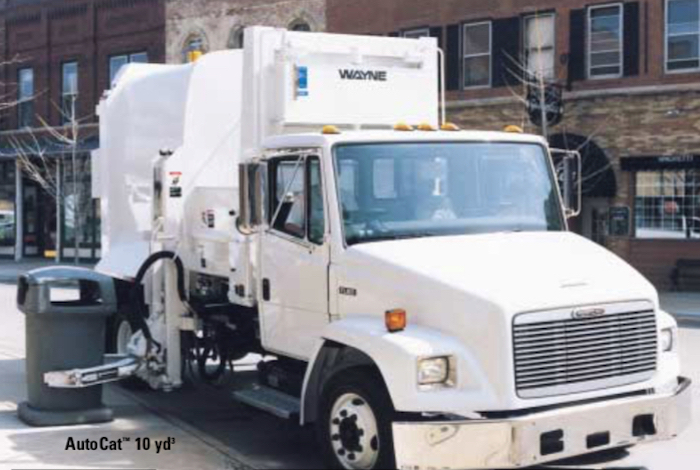
The fully automated Wayne Autocat; like a Junior Curbtender
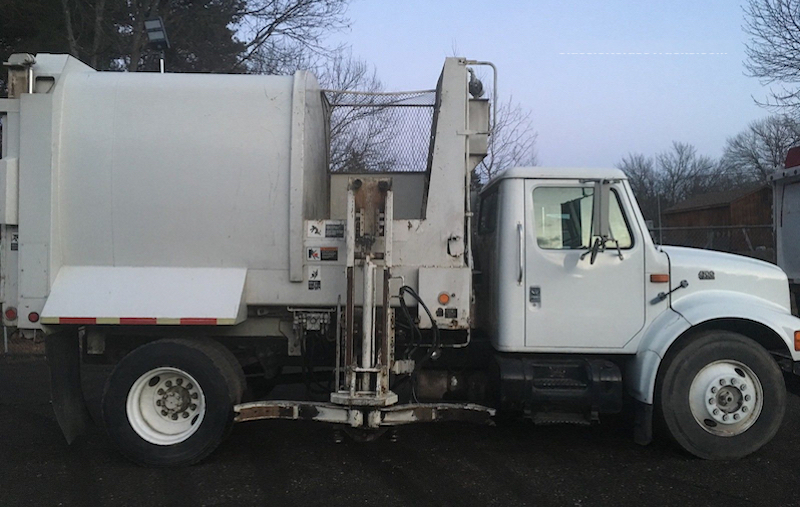
1999 Autocat on Navistar chassis
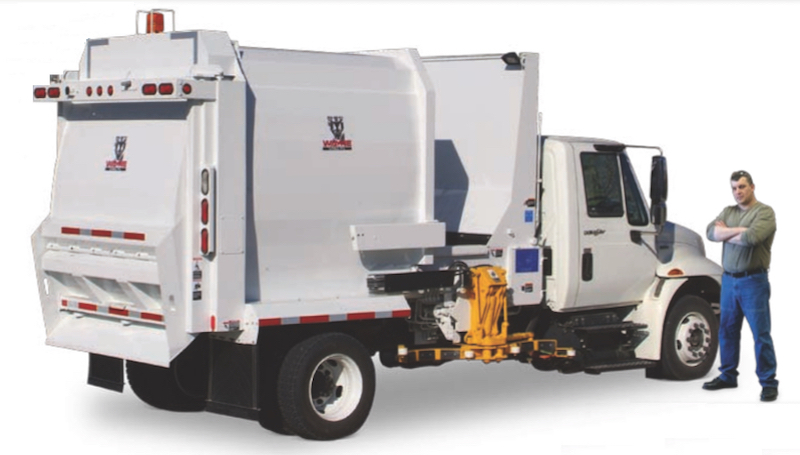
2010 Autocat



7/4/20
© 2020
All Rights Reserved
Photos from factory brochures/advertisements except as noted
Logos shown are the trademarks of respective manufacturers
|
|